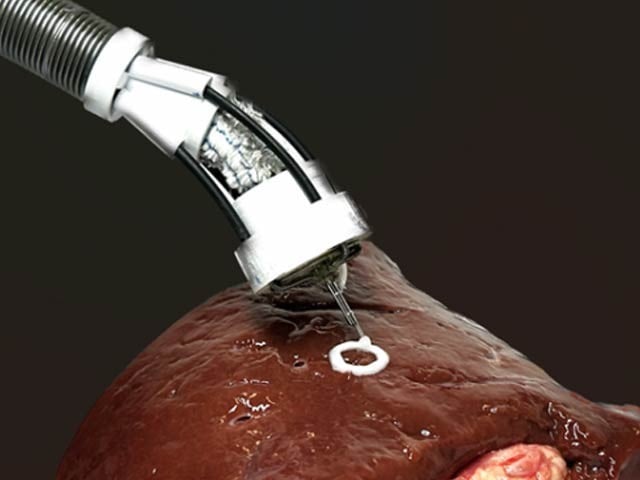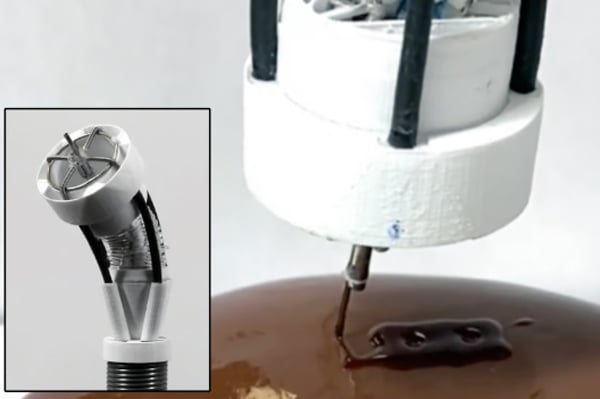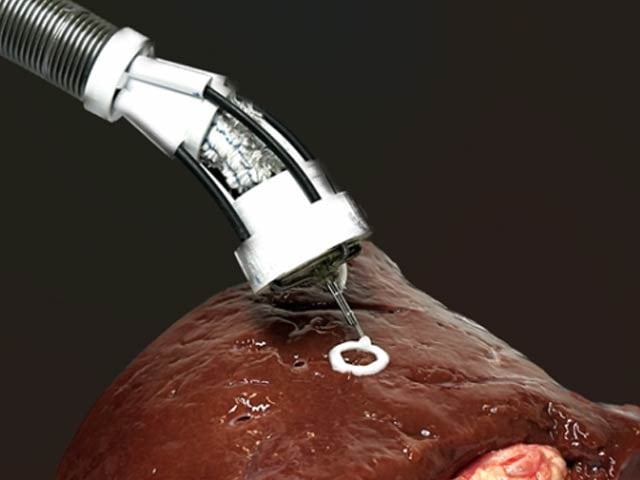
A flexible robot created by experts from the University of New South Wales can go into the human body and print cells or biological components on any organ or tissue. Photo: Courtesy of Newatlas
Sydney: Scientists have taken 3D printing a step further by creating a soft printer that can print cells directly onto human organs.
A robot from University of New South Wales (UNSW) experts can print cells on human tissues and organs inside the body. Although bioprinting robots that print heart tissue, biological components and gastrointestinal grafts have been in the works for a long time, there has been no major success until now.
It is a small and flexible robotic arm that can be inserted into the body like an endoscope. The robotic system injects the biomaterial directly into tissues and organs. However, it has not been tested yet, instead, experts have made a model that makes this process possible, which can be called a proof of concept.

In this invention called F3DP, bioluminescent light is emitted from a nozzle at different angles. This nozzle is attached to a flexible robot arm. It is inserted into the body because opening the patient’s body increases the risk of infection and complications.
It was developed by Dr. Tan Gu Du and his colleagues. They claim that a soft and flexible robot is less painful and causes less damage to the body system. Access to the most difficult parts of the body is possible from ready prototypes, while any part of the liver, heart, bladder and other organs can be directly injected with biological components or materials. Works even on smooth and complex surfaces.
It has been successfully used on pigs and their organs in different concentrations. Several months later, the transplanted cells were still alive in his body. However, human trials are still far away.
(function(d, s, id){
var js, fjs = d.getElementsByTagName(s)[0];
if (d.getElementById(id)) {return;}
js = d.createElement(s); js.id = id;
js.src = “//connect.facebook.net/en_US/sdk.js#xfbml=1&version=v2.3&appId=770767426360150”;
fjs.parentNode.insertBefore(js, fjs);
}(document, ‘script’, ‘facebook-jssdk’));
(function(d, s, id) {
var js, fjs = d.getElementsByTagName(s)[0];
if (d.getElementById(id)) return;
js = d.createElement(s); js.id = id;
js.src = “//connect.facebook.net/en_GB/sdk.js#xfbml=1&version=v2.7”;
fjs.parentNode.insertBefore(js, fjs);
}(document, ‘script’, ‘facebook-jssdk’));



